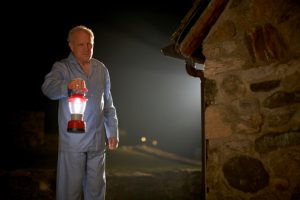 Sundowning, commonly seen in dementia patients, refers to behavioral changes that take place in the evening when the sun sets. Patients may become more agitated, aggressive, or confused as the night approaches. This is often seen in more severe cases of dementia. Sundowning, or sundown syndrome may be a result of disturbances to the patient’s 24-hour ‘body clock’, loss of daytime routine, insufficient or disturbed sleep, too little or too much light, prescribed medication, and excessive disturbing noise.
Sundowning, commonly seen in dementia patients, refers to behavioral changes that take place in the evening when the sun sets. Patients may become more agitated, aggressive, or confused as the night approaches. This is often seen in more severe cases of dementia. Sundowning, or sundown syndrome may be a result of disturbances to the patient’s 24-hour ‘body clock’, loss of daytime routine, insufficient or disturbed sleep, too little or too much light, prescribed medication, and excessive disturbing noise.
Causes of sundown syndrome
The exact cause of sundowning is still unclear, but researchers speculate there are many factors involved. Some of these factors are extreme fatigue, hunger or thirst, depression, pain, boredom, or sleep problems.
Advertisement
The sundown syndrome symptoms are often triggered when there is less light and more shadows in the house, which can lead to confusion and fear, or trouble separating dreams from reality – resulting in disorientation.
A study has found a possible explanation why some patients are susceptible to sundown syndrome. Lead author of the study Tracy Bedrosian said, “There have been a few clinical studies documenting sundowning, but until now there hasn’t been research in animals to see what’s going on in the brain to explain this.”
In these aged mice, the researchers detected changes in the brain parts responsible for attention, emotions, arousal, and other behaviors associated with the sundown syndrome in people.
The researchers also found greater expression of the enzyme acetylcholinesterase prior to bedtime. High levels of this enzyme are associated with anxiety.
Many dementia patients are prescribed medicine to control acetylcholinesterase levels even though there was little evidence that it has any effect on sundowning. The above study actually explains the calming effect of these medicines on patients prone to the sundown syndrome.
Sundown syndrome symptoms
Symptoms of sundowning include any changes in behavior which emerge as the sun is setting, commonly before bedtime. These changes may include:
- Agitation
- Anxiety
- Restlessness
- Irritability
- Confusion
- Disorientation
- Suspiciousness
- Yelling
- Pacing
- Hallucinations or delusions
- Mood swings
Symptoms of sundowning can be hazardous to both the patient and caregiver. The patient may begin to act out or wander, increasing their risk of falls and injury. On the other hand, some patients may partake in what is known as “shadowing,” which means they will follow the caregiver around closely. They may interrupt the caregiver, try and mimic them, and basically just be in the person’s way.
Ensuring that the patient’s environment is safe can help prevent injury and complications resulting from the sundown syndrome symptoms. This involves removing any tripping hazards, locking doors, and making sure the environment is calm for the patient so they don’t lash out.
Diagnosing sundown syndrome
To diagnose sundown syndrome, doctors will use similar tactics that are used to diagnose Alzheimer’s disease or dementia. Because sundown syndrome stems from dementia and cognitive decline, the doctor will first conduct tests to determine the severity of dementia. This may include imaging scans, blood work, and memory and cognitive tests. It’s important to get a proper diagnosis of dementia when treating sundown syndrome because without it treating the symptoms of sundown syndrome alone, as opposed to treating dementia as a whole, can lead to improper treatment and complications.
Treating sundown syndrome
Advertisement
If you are caregiver of a dementia patient suffering from sundowning, there are some things you can do to improve care and effectively handle this type of behavior. Here’s what you can try to cope with sundown syndrome:
- Give the patient something meaningful to do in the evening.
- Set up a relaxing activity in the late afternoon/early evening.
- Think about the patient’s day. Can their behavior be explained by something they may need like food or water? Are they in pain or do they have to use the bathroom? Addressing these needs can help prevent sundowning.
- Minimize the patients’ daytime naps if they are having difficulties falling asleep.
- Have the patient exercise as it can improve sleep.
- Improve their sleeping environment – eliminate caffeine, ensure the room is cool enough and dark.
- Keep appropriate lighting – a room that is too dark can cause distress.
By following some of these tips, you can have greater success in reducing the incidences of sundowning and better managing the symptoms.
Aside from these coping tips, doctors may recommend medications and different types of therapy such as music therapy or light therapy. The severity of the symptoms will determine the course of treatment.
